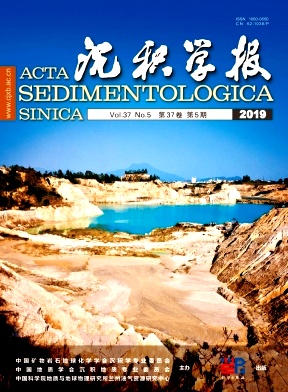The Characteristics and Controlling Factors of Glutenite Reservoir in the Triassic Baikouquan Formation,Xiazijie Area,Mahu Depression
doi: 10.14027/j.issn.1000-0550.2019.002
- Received Date: 2018-07-05
- Rev Recd Date: 2018-12-29
- Publish Date: 2019-10-10
-
Key words:
- diagenesis /
- glutenite /
- controlling factors /
- Baikouquan Formation /
- Mahu Depression
Abstract: A detailed study of the sandy conglomerate reservoir in the Xiazijie, Baikouquan Formation, Mahu Depression,Junggar Basin,included the observation of cores,thin sections,X-ray tomography (XRT),cathodoluminescence (CL)analysis and quantitative statistical analysis,to assess the reservoir petrology,properties,diagenesis and control factors. The main lithology in the study area is glutenite,with fan delta plain and fan delta front subfacies. These were classified into eleven lithofacies types:matrix-supporting medium and fine conglomerate; particle-supporting medium and fine conglomerate;calcareous sandstone;gravel-bearing sandstone;coarse,medium and fine sandstone;siltstone;and mudstone,along with six combined facies types vertically. The main storage space is secondary porosity, consisting of dissolution pores in feldspars, debris and matrix. The reservoir in the study area has low porosity (2.5% 21.2%,average 7.94%)and low permeability (0.01×10-3 982×10-3 μm2,average 5.6×10-3 μm2). It was found that compaction, cementation and dissolution have led to eight types of diagenetic facies which, when combined with the lithofacies, controlled reservoir development. The debris flow reservoir of the fan delta plain mainly developed matrix-supporting medium-to-fine conglomerate facies and medium-to-fine sandstone facies. The high matrix content and strong compaction, together with weak cementation and dissolution in the reservoir, indicate poor storage capability. The underwater channel reservoir of the fan delta front mainly developed matrix-supporting medium-to-fine conglomerate facies,gravel-bearing sandstone facies and fine sandstones facies. The diagenesis in this reservoir is complex. The bottom of the phase sequence is generally strongly compacted;the central zones are cemented with zeolite and carbonates,in which a small number of primary intergranular pores have been retained. Unstabilized rock fragments and dissolved zeolite cements form secondary pore space and improve the physical properties of the reservoir.
| Citation: | CAO YingChang, YAN MiaoMiao, XI KeLai, WU SongTao, ZHU Ning, ZHU RuKai. The Characteristics and Controlling Factors of Glutenite Reservoir in the Triassic Baikouquan Formation,Xiazijie Area,Mahu Depression[J]. Acta Sedimentologica Sinica, 2019, 37(5): 945-956. doi: 10.14027/j.issn.1000-0550.2019.002 |






 DownLoad:
DownLoad: